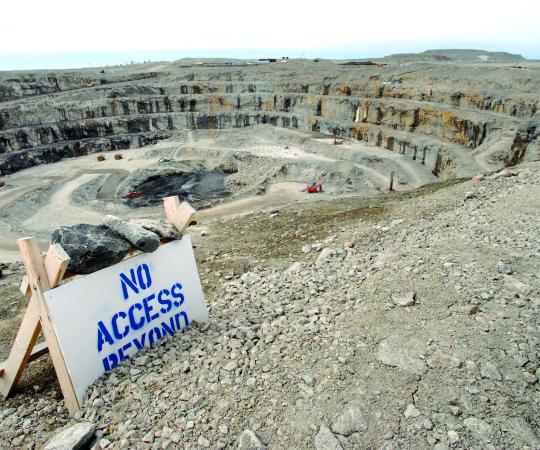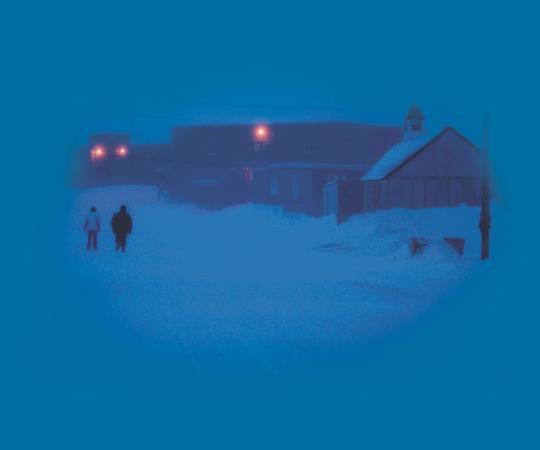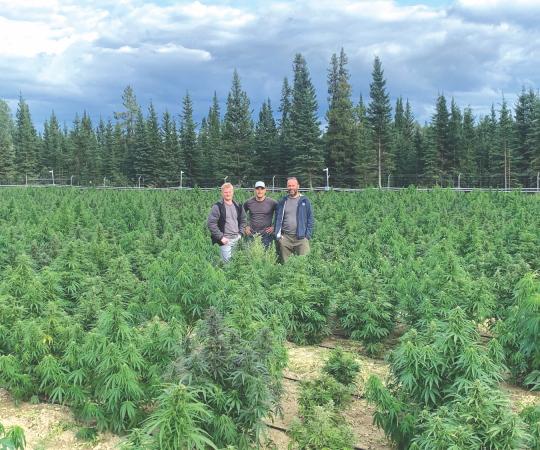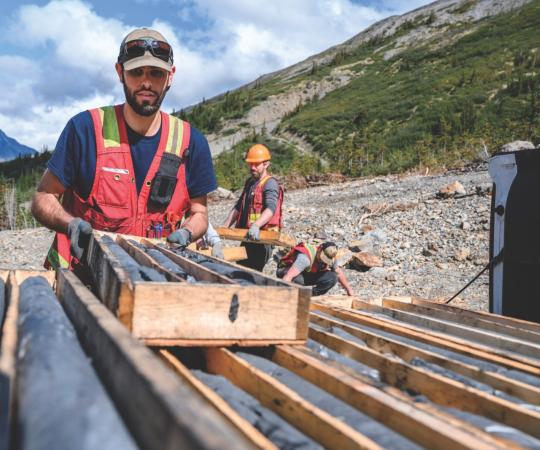Save vehicles and construction equipment, most things are loaded onto the sealift in wooden crates. Once the sealift reaches its destination (or as close as it can before a tug and barge finishes the connection) a local company is often hired to handle the delivery of crates to homes and businesses. “Then you get the fun time of going at it with a crowbar and busting it open,” says Arviat resident Keith Collier. You can pack a surprising amount in the crates, fitting items together like Tetris pieces, to make the most of your space.
But economic choices don’t end with the contents. The crates are made of good, strong wood. After a sealift comes in, you’ll find them outside houses and at the town dump—but they’re not garbage. Collier has a shed made from reused crates that he bought from a man in town. High school students in Gjoa Haven repurposed 39 crates into 15 dog houses for a shop class project last year. Leo Karetak, who has worked on a sealift and lived in communities on their route, says, “You see a lot of new shacks every summer.”

Shop till you drop
Even the most enthusiastic shoppers might find a multi-day retail marathon exhausting, especially after already enduring the trip from remote Northern locales to southern cities like Montreal where sealift operators have bases. “Spending a couple days running around shopping and pushing around loaded carts isn’t always how you want to start your vacation,” says Collier.
Once you’re there, it’s easy to justify any purchase, knowing you’re bound to get a better deal than you would up North. And sometimes that free license to shop leads to impulse buys that weren’t on the well-crafted list. “Even though you’re the one who bought it, you often surprise yourself,” he says. There’s a reason sealifting is known as Christmas in September.
The whole thing takes a lot of preparation: you need the list, the funds and then the stamina to rack up a $5,000 grocery bill. “People at the superstore thought we were on doomsday preparation,” says Collier.
Making space
Sealifting is the norm for Northerners looking to avoid the inflated retail prices at their community store. And many modern houses are built to accommodate it. Nearly every house in Nunavut has an extra large pantry room for storing a dozen bags of flour, case upon case of pop, or maybe Christmas presents for the coming season. In Nunavut, a sealift room is almost as essential as the mud-room that keeps the cold from entering the house.

Share the love
How much ketchup do you use in a year? What about toilet paper? Estimating everything you’ll use over the next 12 months is tough, and many fail. That means a great deal of swapping happens in communities serviced by sealift. As a result, local buy/sell Facebook pages and classified sites are enriched by overambitious sealift orders. As of writing this, a post on Iqaluit Sell/Swap reads: “Going through my sealift and realized that I have over a lifetime supply of parchment paper. I have 20 [rolls] to sell.”
Though last minute sales and trades aren’t always about an order going wrong. Collier remembers one case of a couple being relocated shortly after their year’s order arrived. They had no choice but to unpack every item and turn their living room into a pop-up grocery store. “They were basically re-selling everything at cost,” he says. “People were just pouring into their place.”
As well as knowing what you’ll need, you need to know you’ll be there to use it.










